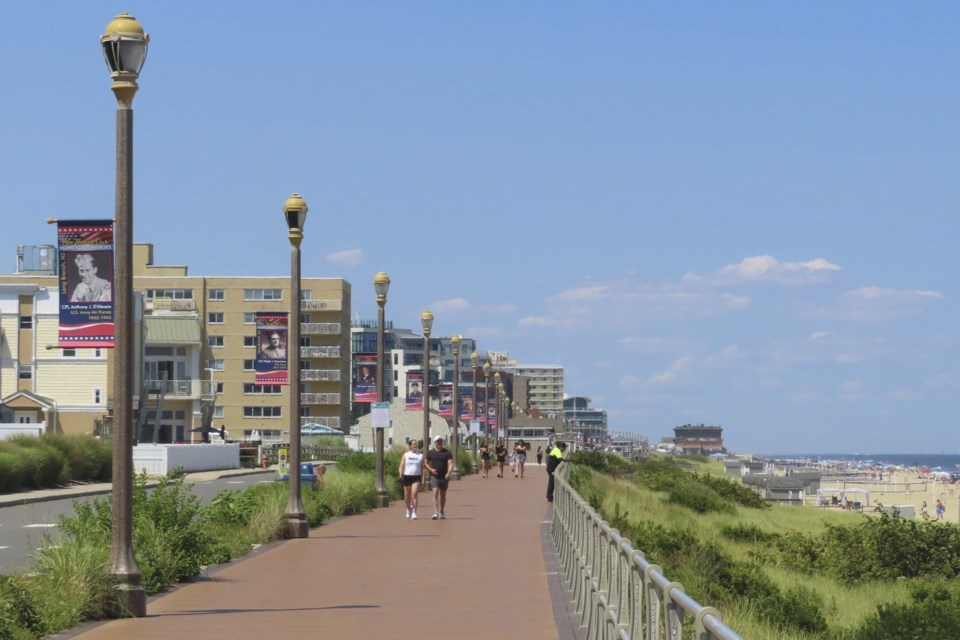LONG BRANCH, N.J. (AP) — A 2% surcharge on property insurance policies, mandatory fees on the oil and gas industries, and holding a public referendum are ways a public-private group formed in the aftermath of Superstorm Sandy recommends to pay for projects to protect New Jersey from the next big storm.
In a report released this week, Rebuild By Design, which formulates plans for disaster resilience, says New Jersey is being pummeled by climate-related disasters, costing taxpayers $7.2 billion over a decade.
It urges the state to hold a public referendum for voters to approve investments in climate-related resiliency projects. It also advocates for a surcharge on property and casualty insurance policies, as well as the creation of a “Superfund” for the resiliency projects to be paid for through mandatory charges to the oil and gas industries.
Two Democratic state lawmakers introduced a bill to do that in New Jersey earlier this month. New York passed a similar law, which is awaiting action by Gov. Kathy Hochul, and similar efforts have happened in Massachusetts, Vermont and Maryland, the group said.
“A majority of the federal funding for building climate resilience is only available when people are already suffering in the aftermath of a disaster,” said Amy Chester, the group's managing director. "We need to shift those investments to dollars that can be allocated more proactively to build resilience ahead of storms and before the most vulnerable communities suffer.”
The group has designed programs in New York, New Jersey and Connecticut stemming from lessons learned from Sandy. They include a mixture of hard barriers such as flood walls and gates; nature-based solutions such as wetlands restoration; and stormwater and drainage improvements that are in varying stages of completion in the region.
It says New Jersey has experienced 14 federally declared disasters between 2011 and 2021. Each of the state's 21 counties has experienced at least five such disasters, including flooding and wildfires, during that time.
The $7.2 billion in disaster recovery aid spent in New Jersey ranks the state third in the nation over that time span, the group said.
Environmental groups applauded the call for a stable source of funding for projects to mitigate the effects of the next storm rather than just clean up and rebuild after it.
“New Jersey is the fastest warming state in the Northeast and third-fastest in the country, meaning our communities and homes are on the frontlines," said Anjuli Ramos-Busot, New Jersey director of the Sierra Club. “We have an urgent need for state funding to protect ourselves and our environment in advance from worsening storms, flooding, and extreme weather events to increase our ability to withstand and recover. We must take preventative action now to save lives and our pockets from future disasters."
Tim Dillingham, executive director of the American Littoral Society, said bad land-use decisions have put many people and public investments in harm's way.
“That vulnerability is growing as climate impacts increase," he said.
Ray Cantor, an official with the New Jersey Business and Industry Association, said the group agrees on the need to increase resilience to natural disasters. But he added, “How it’s funded is, as always, a conversation that needs to account for feasibility and affordability."
Democratic Gov. Phil Murphy's office did not respond to a message seeking comment, and the state Department of Environmental Protection, declined comment.
Sandy hit the nation’s on Oct. 29, 2012. It swamped coastline communities, knocking out power, flooding transit systems and setting neighborhoods ablaze. It has been blamed for 182 deaths, including 12 in New Jersey and 48 in New York, and caused tens of billions of dollars worth of damage, including $36.8 billion in New Jersey and $32.8 billion in New York.
___
Follow Wayne Parry on X at www.twitter.com/WayneParryAC
Wayne Parry, The Associated Press




